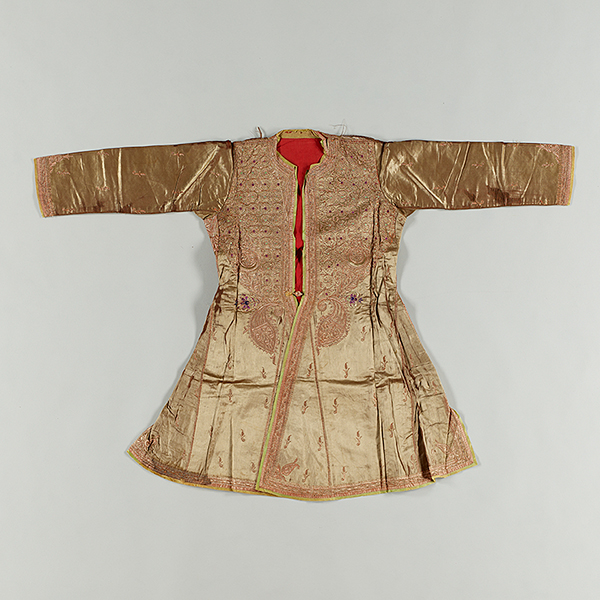Asian Textiles: Cashmere Shawls
-

Coat with Floral Vines, Jaipur, India, 19th century
Asian Gallery (Toyokan) Room 13
November 14, 2023 (Tue) - February 4, 2024 (Sun)Named for the Kashmir region of northwestern India, Cashmere goats are famous for their soft and lustrous wool that was made into luxurious shawls from the 16th to 18th century. Indian weavers used a labor-intensive technique, called a tapestry weave, to weave ornate patterns into the fabric as they made it, though it was also common to use the faster technique of embroidering an already-made cloth.
As demand for cashmere shawls grew in Europe and the Middle East, Persian weavers in Iran began to supply shawls as well. This gallery presents these shawls along with the opulent clothing and carpets of the ruling elite in Persia’s Safavid dynasty (1501–1736) and India’s Mughal Empire (1526–1858).
| Designation | Name | Creation/ Excavation/ Provenance |
Period | Acquisition/ Ownership/ Accession Number |
CMT | ||
| Highlight | Shawl with Flowering Plants, Paisley Cones, and Linked Vines | Kashmir, India | 18th century | TI-407 | |||
| Shawl with Paisley Cones | Kashmir, India | 18th–19th century | TI-405 | ||||
| Highlight | Shawl with a Medallion and Paisley Cones | Kashmir, India | 18th century | TI-406 | |||
| Shawl with Paisley Cones | Kashmir, India | 19th century | TI-402 | ||||
| Highlight | Coat with Floral Vines | Jaipur, India | 19th century | TI-418-3 | |||
| Highlight | Sash with Flowering Plants and Vines | Iran | Safavid dynasty, 17th century | Private collection |
